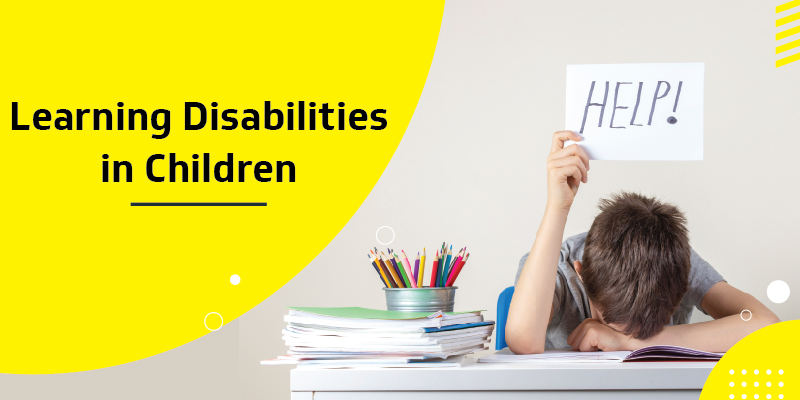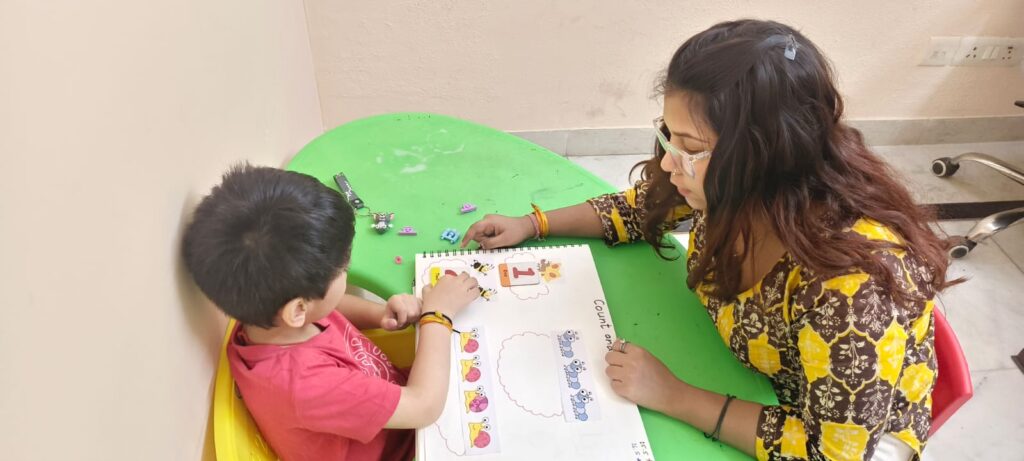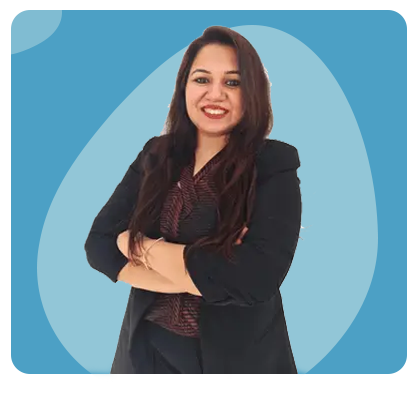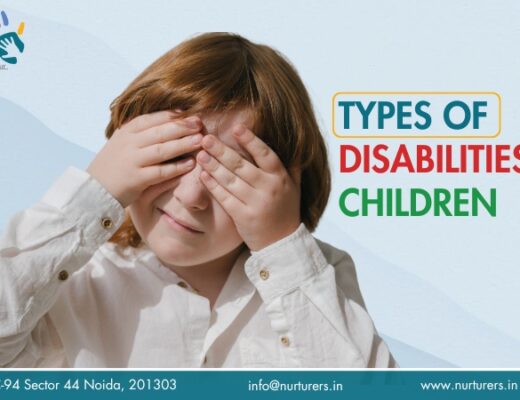In conversations about healthcare, education, and child development, terms like “disability” and “disorder” are often misunderstood or used interchangeably. However, these terms hold unique meanings that significantly impact how conditions are identified and managed. This blog will clarify the difference between disability and disorder, focusing on learning disabilities and learning disorders. It will also cover the causes of learning disabilities and the challenges faced by children. If you’re searching for the best Autism center in Noida, Nurturers provides expert guidance and support.
What is the Difference Between Disability and Disorder?
Understanding the difference between disability and disorder starts with their definitions:
Disability
A disability refers to a condition that significantly impairs an individual’s ability to perform specific activities or interact with their surroundings. Disabilities can arise from physical, mental, or developmental challenges and are often long-term or permanent.
Characteristics of Disabilities
- Nature: Disabilities can be congenital (present from birth) or acquired (resulting from injury, illness, or aging).
- Types:
- Physical Disabilities: Affect mobility, strength, or coordination (e.g., paralysis, amputation).
- Sensory Disabilities: Impair sensory functions, such as vision or hearing (e.g., blindness, hearing loss).
- Intellectual Disabilities: Affect cognitive abilities, learning, and problem-solving (e.g., Down syndrome).
- Developmental Disabilities: Occur during developmental stages, affecting physical or cognitive growth (e.g., cerebral palsy, autism).
- Impact: Disabilities often require assistive devices, therapy, or accommodations to enhance quality of life.
Examples of Disabilities
- Blindness: Complete or partial loss of vision affecting daily activities.
- Cerebral Palsy: A group of disorders affecting movement, posture, and muscle tone.
- Intellectual Disabilities: Significant limitations in intellectual functioning and adaptive behaviors.

Disorder
A disorder is a disruption or irregularity in normal mental, physical, or emotional functioning. Unlike disabilities, disorders can be temporary, chronic, or episodic.
Characteristics of Disorders
- Nature: Disorders may stem from genetic, environmental, or lifestyle factors.
- Types:
- Mental Disorders: Affect emotional and psychological well-being (e.g., depression, anxiety).
- Neurological Disorders: Involve the nervous system (e.g., epilepsy, ADHD).
- Physical Disorders: Affect bodily systems and organ functions (e.g., hormonal imbalances, cardiovascular issues).
- Progression: Some disorders may be managed or resolved with proper treatment, while others may persist.
Examples of Disorders
- Anxiety Disorders: Characterized by excessive fear or worry impacting daily life.
- ADHD (Attention-Deficit/Hyperactivity Disorder): A neurodevelopmental disorder affecting focus, impulsivity, and activity levels.
- Autism Spectrum Disorders: A range of conditions affecting communication, behavior, and social interaction.
Key Difference: While disabilities often stem from disorders, not all disorders result in disabilities. For instance, a child with an anxiety disorder may not have a disability but might struggle with daily tasks.

Difference Between Learning Disability and Learning Disorder
When discussing education and child development, the terms learning disability and learning disorder are frequently mentioned. While they are related, they are not the same:
- Learning Disability:
A learning disability is a neurological condition that affects how the brain processes information. This condition is lifelong and can impact a child’s ability to read, write, perform math, or retain information. Common examples include:- Dyslexia: Difficulty with reading and understanding written text.
- Dyscalculia: Challenges in understanding numbers and math concepts.
- Dysgraphia: Problems with writing, including illegible handwriting and difficulty organizing thoughts on paper.
- Learning Disorder:
A learning disorder refers to specific challenges in acquiring knowledge or skills in a particular area. Learning disorders are often narrower in scope than disabilities and may improve with proper intervention. Examples include:- Language processing disorders.
- Auditory processing disorders.
Key Difference: The difference between learning disability and learning disorder lies in their scope and permanence. While a learning disability is broader and lifelong, a learning disorder is often more specific and may improve with time and support.

Causes of Learning Disabilities
Learning disabilities in children can have various causes, including:
- Genetic Factors:
A family history of learning disabilities can increase the likelihood of similar challenges in children. - Brain Development Issues:
Complications during pregnancy, such as lack of oxygen, premature birth, or exposure to harmful substances, can affect brain development. - Environmental Influences:
Early childhood exposure to toxins (like lead), inadequate nutrition, or limited access to educational resources can contribute to learning difficulties. - Injuries or Trauma:
Head injuries, infections, or severe emotional trauma can disrupt normal brain function, leading to learning disabilities. - Neurological Disorders:
Conditions such as ADHD or autism spectrum disorders may also be linked to learning disabilities.
Learning Disabilities in Children
Children with learning disabilities face unique challenges, but early identification and support can make a significant difference.
Signs of Learning Disabilities in Children:
- Difficulty reading, writing, or performing basic math.
- Poor memory and organizational skills.
- Trouble understanding instructions or concepts.
- Avoiding schoolwork due to frustration or anxiety.
- Difficulty interacting socially or controlling emotions.
If your child shows these signs, consulting a professional can help diagnose the issue and provide tailored solutions.

How Autism Relates to Learning Disabilities and Disorders
Autism spectrum disorder (ASD) is a developmental disorder that often overlaps with learning challenges. Children with autism may struggle with communication, social interactions, and sensory processing, which can lead to learning difficulties.
How Nurturers, the Best Autism Center in Noida, Can Help
Nurturers is a trusted name in supporting children with autism, learning disabilities, and learning disorders. Here’s how they make a difference:
- Customized Programs:
Every child receives a personalized plan tailored to their specific needs and strengths. - Qualified Experts:
The team includes experienced therapists, special educators, and psychologists dedicated to helping children thrive. - Holistic Approach:
Combining therapy, education, and parental involvement, Nurturers ensures comprehensive care for every child. - Inclusive Environment:
A safe and nurturing atmosphere helps children build confidence and develop skills. - Parental Support:
Nurturers offers workshops and resources to guide parents in supporting their child’s growth at home.

Conclusion
Understanding the difference between disability and disorder, especially when it comes to learning, is crucial for providing the right support to children. Whether your child faces a learning disability, a learning disorder, or challenges related to autism, early intervention and expert care can make a world of difference.
At Nurturers, the best Autism center in Noida, we are committed to helping children overcome challenges and achieve their full potential. Contact us today to learn more about our programs and how we can support your child’s journey.

Hi! I am Swati Suri, a Special Educator with 9+ years of experience and the founder of Nurturers. I am passionate about helping children with special needs and supporting their families every step of the way.


